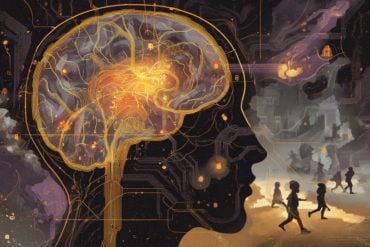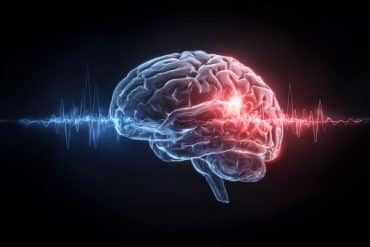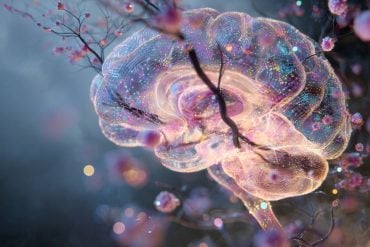Summary: Researchers have identified neurons in the hippocampus that store “meal memories,” encoding both what and when food was consumed. These specialized memory traces, or meal engrams, form during pauses between bites, helping the brain log eating experiences.
When these neurons were disrupted in lab rats, the animals overate and forgot where meals were located, highlighting a unique brain mechanism tied to hunger control. The study offers insight into why memory-impaired individuals and distracted eaters may overconsume food, pointing to meal memory as a crucial piece of the obesity puzzle.
Key Facts:
- Meal Engrams: Specialized neurons in the ventral hippocampus store detailed meal memories.
- Disrupted Signals: Damaging these neurons impaired memory for meals, leading to overeating.
- Hunger Link: These neurons connect to the hypothalamus, directly influencing eating behavior.
Source: USC
Researchers identify “meal memory” neurons in laboratory rats that could explain why forgetting lunch leads to overeating.
Scientists have discovered a specific group of brain cells that create memories of meals, encoding not just what food was eaten but when it was eaten.

The findings, published today in Nature Communications, could explain why people with memory problems often overeat and why forgetting about a recent meal can trigger excessive hunger and lead to disordered eating.
During eating, neurons in the ventral hippocampus region of the brain become active and form what the team of researchers call “meal engrams” — specialized memory traces that store information about the experience of food consumption.
While scientists have long studied engrams for their role in storing memories and other experiences in the brain, the new study identified engrams dedicated to meal experiences.
“An engram is the physical trace that a memory leaves behind in the brain,” said Scott Kanoski, professor of biological sciences at the USC Dornsife College of Letters, Arts and Sciences and corresponding author of the study.
“Meal engrams function like sophisticated biological databases that store multiple types of information such as where you were eating, as well as the time that you ate.”
Distracted eating implications
The discovery has immediate relevance for understanding human eating disorders. Patients with memory impairments, such as those with dementia or brain injuries that affect memory formation, may often consume multiple meals in quick succession because they cannot remember eating.
Furthermore, distracted eating — such as mindlessly snacking while watching television or scrolling on a phone — may impair meal memories and contribute to overconsumption.
Based on the experiment’s findings, meal engrams are formed during brief pauses between bites when the brain of laboratory rats naturally survey the eating environment. These moments of awareness allow specialized hippocampal neurons to integrate multiple streams of information.
Kanoski said it can be assumed a human’s brain would undergo a similar phenomenon. When someone’s attention is focused elsewhere — on phone or television screens — these critical encoding moments are compromised.
“The brain fails to properly catalog the meal experience,” said Lea Decarie-Spain, postdoctoral scholar at USC Dornsife and the study’s first author, “leading to weak or incomplete meal engrams.”
Mechanism of ‘meal memories’
The research team used advanced neuroscience techniques to observe the brain activity of laboratory rats as they ate, providing the first real-time view of how meal memories form.
The meal memory neurons are distinct from brain cells involved in other types of memory formation. When researchers selectively destroyed these neurons, lab rats showed impaired memory for food locations but retained normal spatial memory for non-food-related tasks, indicating a specialized system dedicated to meal-related information processing.
The study revealed that meal memory neurons communicate with the lateral hypothalamus, a brain region long known to control hunger and eating behavior. When this hippocampus-hypothalamus connection was blocked, the lab rats overate and could not remember where meals were consumed.
Eating management implications
Kanoski said the findings could eventually inform new clinical approaches for treating obesity and weight management. Current weight management strategies often focus on restricting food intake or increasing exercise, but the new research suggests that enhancing meal memory formation could be equally important.
“We’re finally beginning to understand that remembering what and when you ate is just as crucial for healthy eating as the food choices themselves,” Kanoski said.
About the study: In addition to Kanoski, other study authors include Lea Decarie-Spain, Cindy Gu, Logan Tierno Lauer, Alicia E. Kao, Iris Deng, Molly E. Klug, Alice I. Waldow, Ashyah Hewage Galbokke, Olivia Moody, Kristen N. Donohue, Keshav S. Subramanian, Serena X. Gao, Alexander G. Bashaw and Jessica J. Rea of USC; and Samar N. Chehimi, Richard C. Crist, Benjamin C. Reiner and Matthew R. Hayes from the University of Pennsylvania’s Perelman School of Medicine; and Mingxin Yang and Guillaume de Lartigue from the Monell Chemical Senses Center; and Kevin P. Myers from the Department of Psychology at Bucknell University.
Funding: The study was supported by a Quebec Research Funds Postdoctoral Fellowship (315201), an Alzheimer’s Association Research Fellowship (AARFD-22-972811), a National Science Foundation Graduate Research Fellowship (DK105155), and a National Institute of Diabetes and Digestive and Kidney Diseases grant (K104897).
About this neuroscience research news
Author: Will Kwong
Source: USC
Contact: Will Kwong – USC
Image: The image is credited to Neuroscience News
Original Research: Open access.
“Ventral hippocampus neurons encode meal-related memory” by Scott Kanoski et al. Nature Communications
Abstract
Ventral hippocampus neurons encode meal-related memory
The ability to encode and retrieve meal-related information is critical to efficiently guide energy acquisition and consumption, yet the underlying neural processes remain elusive.
Here we reveal that ventral hippocampus (HPCv) neuronal activity dynamically elevates between eating bouts during meal consumption and this response is predictive of performance in a foraging-related memory test for the spatial location of a previously consumed meal.
Targeted recombination-mediated ablation of HPCv meal-responsive neurons impairs meal location memory without influencing food motivation or spatial memory for escape location.
These HPCv meal-responsive neurons project to the lateral hypothalamic area (LHA) and are enriched in serotonin 2a receptors (5HT2aR).
Either chemogenetic silencing of HPCv-to-LHA projections or intra-HPCv 5HT2aR antagonist yielded meal location memory deficits, as well as increased caloric intake driven by shorter temporal intervals between meals.
Collective results identify a population of HPCv neurons in male rats that dynamically respond during eating to encode meal-related memories.






